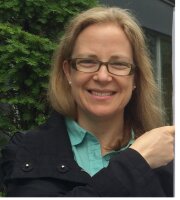Keynote Speaker

Silvina Montrul
Professor of Spanish Linguistics, and Second Language Acquisition
Department of Linguistics
University of Illinois at Urbana-Champaign
She is the author of The Acquisition of Spanish (Benjamins, 2004), Incomplete Acquisition in Bilingualism. Re-examining the Age Factor (Benjamins, 2008), El bilingüismo en el mundo hispanohablante (Wiley-Blackwell, 2013) The Acquisition of Heritage Languages (Cambridge University Press 2016), as well as numerous articles in journals such as Bilingualism: Language and Cognition, The International Journal of Bilingualism, Language Learning, The Heritage Language Journal, Studies in Second Language Acquisition, Language Acquisition, Second Language Research. Her research focuses on linguistic and psycholinguistic approaches to adult second language acquisition and bilingualism, with expertise in language loss and retention in minority language-speaking bilinguals.
Heritage Language Variability and Bilingual Language Change
Among the Romance languages, Spanish and Romanian developed diachronically a full-fledged system of Differential Object Marking: the overt morphological marking of direct objects that are prominent on semantic and pragmatic scales. Spanish marks animate, specific direct objects with the preposition a (Juan vio a María “Juan saw Mary.”); Romanian with the preposition pe (L- am văzut pe Mihai “I have seen Michael”). DOM in Romanian co-exists with accusative clitic doubling, which developed independently from DOM but are at present merged constructions in Modern Romanian (Hill & Mardale 2020). In some monolingual varieties of Spanish (Argentina, Mexico) DOM’s evolution is one of expansion to inanimate specific objects (Arechabaleta 2019), whereas in Spanish in contact with English in the United States, the tendency is toward omission and optionality of DOM with animate specific objects (i.e., in obligatory contexts). I will report on a study of Romanian and Spanish in the United States in two immigrant generations that confirm the tendency towards erosion of DOM in the two languages. Yet, the emerging variation and potential change is more extensive and widespread in Spanish than in Romanian. I consider several language-internal and language-external sociolinguistic factors that explain why DOM omission (or retraction) in Spanish is more advanced than in Romanian, and similar heritage languages spoken in the U.S that also exhibit DOM (Hindi, Turkish). I discuss how the changing nature of input throughout the lifespan of heritage speakers may contribute to the acquisition, maintenance, and potential change of the language at the individual level and across generations. I argue that it is the young adult heritage speakers who drive the change toward convergence with the majority language (English), and who may spread it to the parental generation in the case of Spanish in the United States.